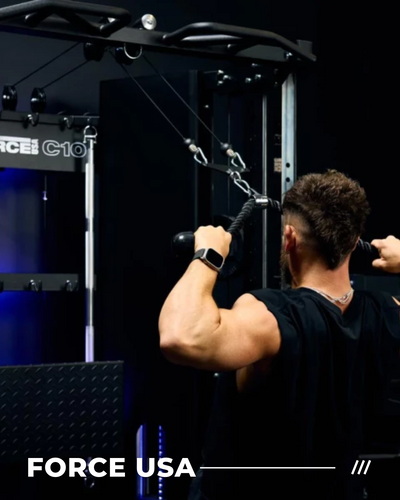BY JAMES WHITE
With a variety of courses that range from beginner “sprint” level to advanced spartan challenges that involve mountains, frigid water, fire and plenty of obstacles, you need to be prepared for anything. You can be sure to expect plenty of climbing, crawling, running and carrying. With that in mind, this post will discuss the most effective workouts to prepare for an obstacle course race.
If you are preparing for your first obstacle course race, it's important that you have a basic foundation of strength and conditioning. This includes training for at least a few months with free weights and some running. You don't need to be the world's strongest man or a marathon runner, but you should be working out consistently.
The three keys to setting up workouts that prepare you for obstacle course races are: strength training, running, and obstacle specific training. How you set up your week depends on your schedule and how much time you plan on devoting to your workouts, but generally you want to work out at least three days per week. It's best to give yourself at least 6 weeks to build a solid base of strength and conditioning before a race.
As a coach it's my job to create workout programs for my clients. One of the most important aspects of a program is simplicity. Each single element of a routine serves a purpose. There is no fluff. Everything is included for a reason, to help you accomplish your goal of completing an obstacle course race.
Let's take a look at some workouts.
WORKOUT 1—STRENGTH TRAINING FOLLOWED BY INCLINE RUNNING, CRAWLING, AND CARRYING
A simple and effective way to structure a workout to prepare for an obstacle course race is to start with a few big lifts; squats, presses, chin-ups, dips, deadlifts. Perform a few sets of each lift. Ex. (3 sets of 6 reps of squats, overhead presses and chin-ups) Once you complete the lifting portion of the workout head over to the treadmill or an outdoor hill if you have one available. If you have never run hills, you need to take it slow at the beginning. Let your body adapt with a few minutes at a time. One good way to incorporate hill running into your routine is with intervals. For every minute of incline running, you walk a minute to give your body a chance to adapt to the new stress.
After incline running you will perform a circuit of crawling, carrying and dragging. For this portion of the workout you need a sled for dragging, some weights to carry and space to crawl. If you don't have a sled just do the carrying and crawling. This part of the workout is generally between five and ten minutes. You don't need more than that after the strength training and incline running.
The entire workout should last about an hour. Thirty minutes for the strength training portion, twenty minutes for the running and the rest for the obstacle course specific training. Always warm-up for a few minutes and cool-down with some stretching for the hips, hamstrings and calves especially after the incline running.
WORKOUT 2—STRENGTH TRAINING, RUNNING, AND BODYWEIGHT CIRCUIT
This workout has less focus on strength training (only two lifts) and more time spent on running and bodyweight training. For this workout you will choose one lower-body exercise (squat, step-up, deadlift) and one upper-body exercise (overhead press or bench press). Perform 3-4 sets of each exercise for 6-8 reps with a few minutes rest between sets.
After your complete the strength training, you want to find an area you can run and perform pushups, squats and crawls. A park or playground would be ideal but if you are in a gym you can use any open floor space. If you have access to a pullup bar, that would be ideal but it's not essential. Do what you can with what you have available.
There are two ways you can approach this part of the workout, depending on the space you have available. If you have a big open area you will run between circuits of bodyweight exercises. When you are limited by space, you will have to improvise the running a little bit and do more quick sprints between calisthenics.
The bodyweight circuits will consist of high-rep sets that will tap into your muscular endurance as you move right into running under fatigue. This will prepare you for the conditions of an obstacle course race. A typical circuit will consist of pushups for high-reps until you are close to failure, bodyweight squats to failure, then finish with bear crawls for time or distance.
For this workout the strength training is shorter, so the second half of the workout will get more attention. The purpose of the running and bodyweight circuits is to perform a lot of quality work while under fatigue. Rest as little as possible, but if you need to take a quick breather to be sure you aren't performing the exercises with improper form and risking injury. Training should be hard, but it's meant to build you up, not hurt you.
Both of these workouts are great options to include in your training program as you prepare for an obstacle course race. Mix it up and try them both. Each workout can be altered to suit your needs for the day. Give yourself time to build up to the race (at least six weeks) so you have a solid foundation of strength and conditioning and specific training with running, crawling and carrying.
One final suggestion to prepare you for the obstacle course race is to be sure and do some outdoor climbing, whether it's hills, mountains or even just stairs if you have no hills nearby. You want to be prepared to climb while outside in the elements as that's one challenge of nearly every obstacle course race you will encounter. Train hard and enjoy your race!







